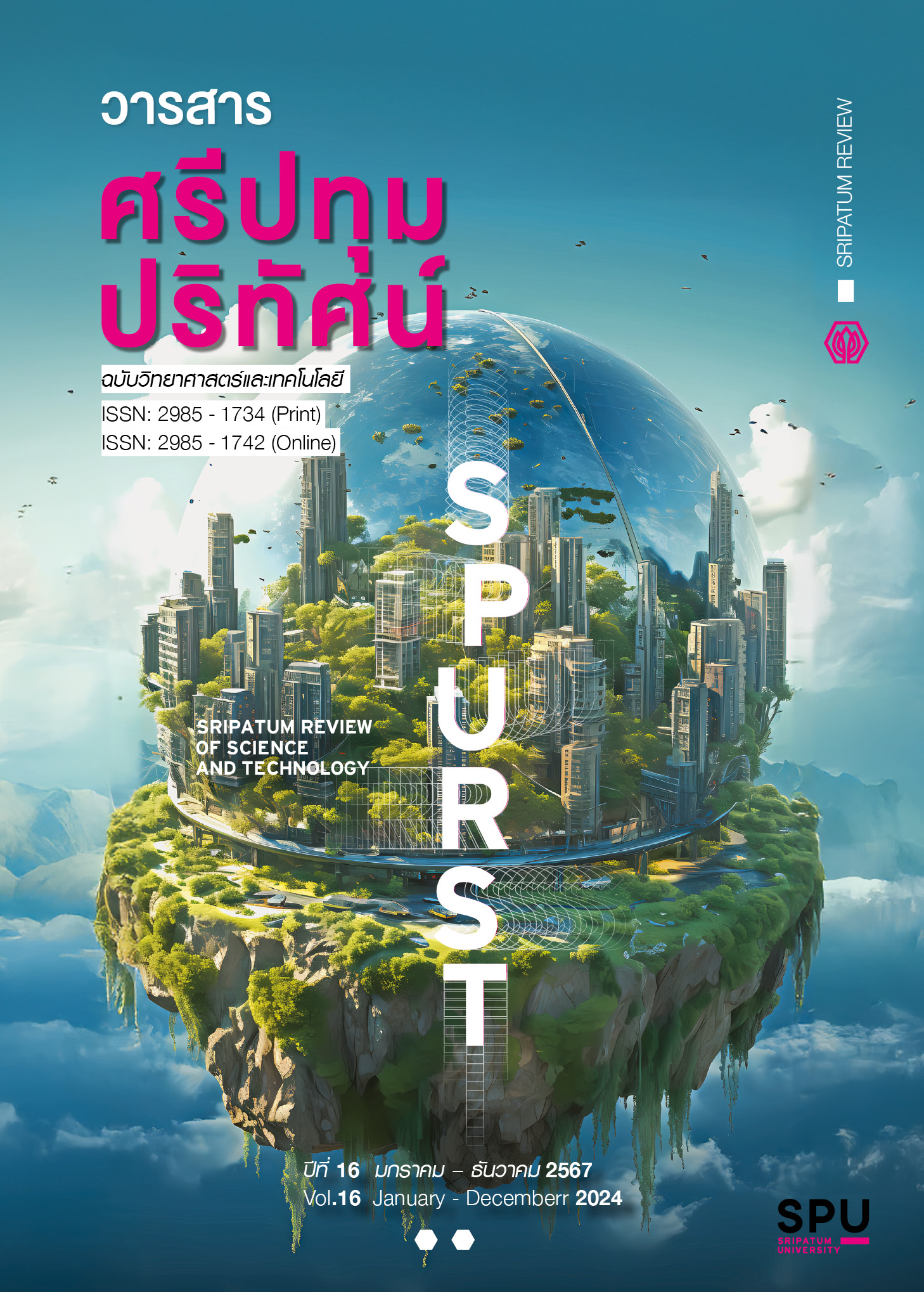ตัวแบบทำนายความเสี่ยงภาวะซึมเศร้าด้วยเทคนิคการเรียนรู้เชิงลึกจากความพึงพอใจพื้นฐานในการดำรงชีพ กรณีศึกษากลุ่มประชากรในจังหวัดกรุงเทพมหานคร
Main Article Content
บทคัดย่อ
บทความวิจัยนี้ เป็นการทำนายความเสี่ยงโรคซึมเศร้าจากปัจจัยภายนอกด้วยตัวแบบการเรียนรู้เชิงลึก มีวัตถุประสงค์ 3 ประการ ได้แก่ (1) เพื่อศึกษา พัฒนา และสร้างตัวแบบการทำนายความเสี่ยงต่อภาวะซึมเศร้ากรณีศึกษาผู้คนในจังหวัดกรุงเทพมหานคร ด้วยเทคนิคการเรียนรู้เชิงลึก (2) เพื่อทดสอบประสิทธิภาพตัวแบบการทำนาย ความเสี่ยงต่อภาวะซึมเศร้ากรณีศึกษาของผู้คนในจังหวัดกรุงเทพมหานคร ด้วยเทคนิคการเรียนรู้เชิงลึก (3) เพื่อเปรียบเทียบ และประเมินผลการทดสอบการทำนายของตัวแบบ ผ่านแบบสอบถามเกี่ยวกับปัจจัยภายนอกที่นำไปสู่ความเสี่ยงการเกิดโรคซึมเศร้าที่ผู้วิจัยได้ออกแบบ เทียบกับแบบสอบถามการประเมินโรคซึมเศร้าของกรมสุขภาพจิต กระทรวงสาธารณสุข กรณีศึกษากลุ่มประชากรในจังหวัดกรุงเทพมหานคร ใช้แบบสอบถามแบบออนไลน์จำนวน 400 ตัวอย่าง จากประชากรในกรุงเทพฯ สร้างตัวแบบทั้งปัจจัยภายในและภายนอก ปรับเกณฑ์คะแนนให้สอดคล้องกันตามมาตรฐานสากล แล้วนำผลจากตัวแบบมาเทียบกัน พบว่าตัวแบบจากปัจจัยภายนอกมีความถูกต้อง 99.92% และตัวแบบจากปัจจัยภายในมีความถูกต้อง 99.93% ต่างกันเพียง 0.01% ตัวแบบทั้งสองมีค่าความผิดพลาด MSE น้อยกว่า 0.0295 และ MAE น้อยกว่า 0.1279 สรุปได้ว่าทั้งสองตัวแบบสอดคล้องกัน สามารถนำงานวิจัยไปพัฒนาต่อยอด เพื่อใช้ทำนายภาวะเสี่ยงต่อการเกิดโรคซึมเศร้าได้แม่นยำขึ้น
Article Details
เอกสารอ้างอิง
Department of Mental health. (2022). Revealing the statistics of depression and Thai society,
the silent emotional dangers of modern people. [Online]. Retrieved on 10 October
from: https://dmh.go.th/news-dmh/view.asp?id=31459 (in Thai)
Thai PBS. (2022). Mental illness-depression, Thai statistics increase 1-2%. [Online]. Retrieved
on 10 October 2023 from: https://www.thaipbs.or.th/news/content/324887 (in Thai)
Department of Mental health - thaidepression. (2023). Total number of patients in budget
year 2022. [Online]. Retrieved on 10 October 2023 from: https://www.hfocus.org/ content/2022/12/26697 (in Thai)
The Psychiatric Association of Thailand. (2022). Number of patients with depression in
government hospitals. [Online]. Retrieved on 10 October 2023 from: http://example. com/psychiatry-association
Sundararajan & Wood. (2019). Time series forecasting using deep learning. arXiv
preprint arXiv:1905.03003.
Cho, K. et al. (2014). Learning Phrase Representations using RNN Encoder–Decoder for
Statistical Machine Translation. arXiv preprint arXiv:1406.1078.
Chen, J. et al. (2020). Artificial Intelligence in Depression Diagnosis: Recent Advances,
Challenges, and Future Prospects. Frontiers in Psychiatry, 11, 450.
World Health Organization (2022). Mental Health Atlas 2020 Country Profile: Thailand.
[Online]. Retrieved on 30 October 2023 from: https://www.who.int/southeastasia /home/search?indexCatalogue=searo-content-index&searchQuery=depression&words Mode=AnyWord
Banchuen, P. (2019). The development of sentiment data analysis model for customer
opinion classification using deep learning technique. the degree of master of science
in information technology school of information technology sripatum university.
(in Thai)
Kroenke, K. et al. (2001). The PHQ-9: Validity of a Brief
Depression Severity Measure. Journal of General Internal Medicine, DOI: 10.1046/j.1525-1497.2001.016009606.x.


